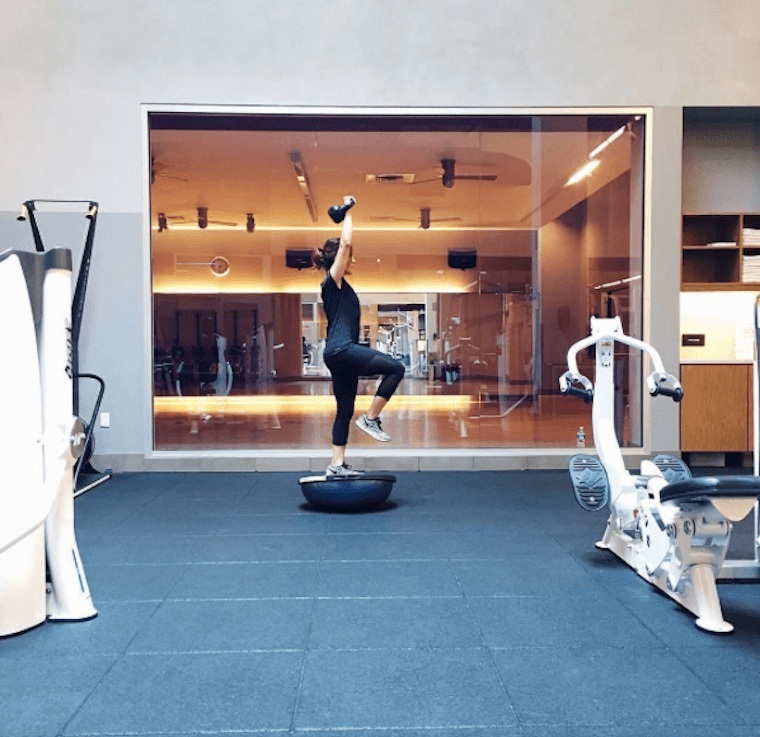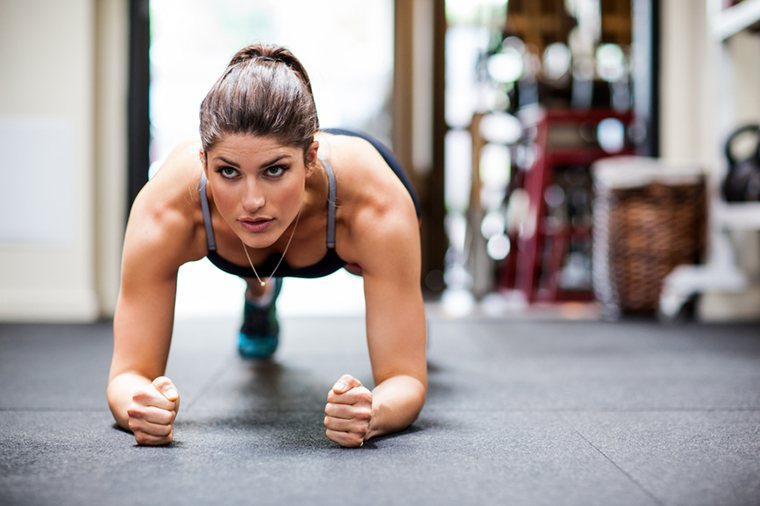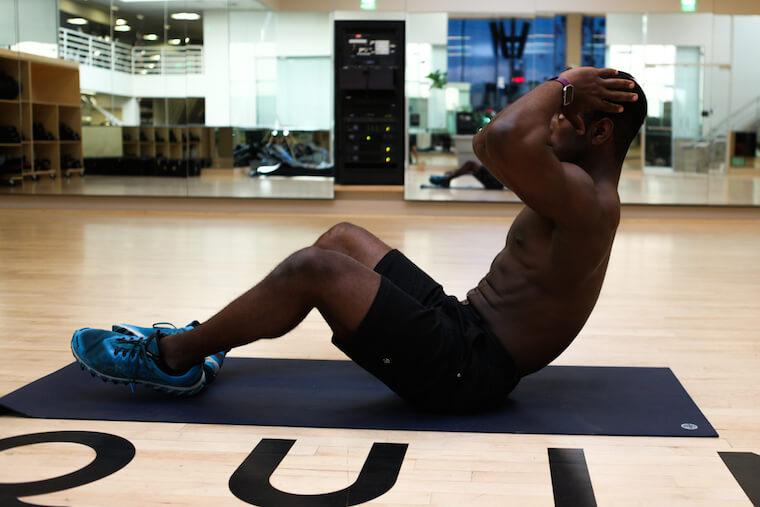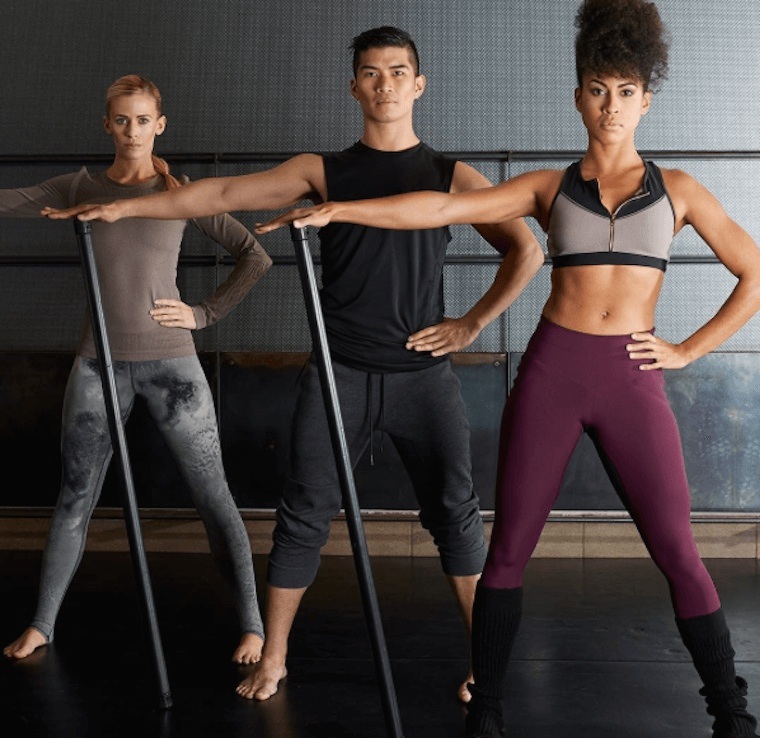And while all of these notions are intriguing, there’s only so much time in a day to dedicate to one’s midsection—it's summertime and there's beach picnics to plan and flower mandalas to make, after all. So what’s the advice we should be taking to heart, and what can we ditch quicker than a full face of makeup in the 80-degree heat?
For answers, we turned to Toby Massenburg, the Los Angeles-based creator of Best Abs Ever—a new group fitness class that just rolled out at Equinox nationwide. “This workout is about making sure we’re focusing on the things that are going to make us more powerful, strong, and efficient within our bodies,” he claims—and it’s totally devoid of any core moves that he’s found to be a waste of time.
Keep reading to discover six of the biggest ab workout myths that most of us still believe to be true—and what core expert Toby Massenburg thinks we should be doing instead.

Myth 1: The most efficient ab exercises are done on the floor
If you look forward to the core section of your workout because you get to to lay down, no judgement—but you’re doing it all wrong. “The most effective movement is having a 360-degree motion that incorporates the entire body,” explains Massenburg.

{{post.sponsorText}}
In fact, his go-to core move is actually a variation on a lunge. Here’s how it works: load a dumbell onto your left shoulder, then take a step forward with the right foot and come down into a lunge. Then, at the same time, throw the weight across the bent knee to the right hip, and bring the right foot and left hand back to the start position.
“One of the best things about the lunge-and-chop is that you have acceleration and deceleration,” he explains, adding that kettlebell swings have a similar effect on the core. “When you’re throwing a load in one direction, it calls for a lot of core activation, as does slowing it down and going back to starting position.”

Myth #2: Holding a plank for ages is the key to a strong core
There’s nothing wrong with static planks, but if you really want to up your core game, Massenburg says there needs to be some movement happening. He suggests mixing it up with plank variations that incorporate total body movement. His personal favorite is the spider plank, in which you draw your knee into your elbow. (These celeb-approved versions are also bound to keep your muscles burning.)

Myth #3: Crunches are totally ineffective
Yes, crunches and sit-ups have gotten a bad rap over the years, and even Massenburg isn’t a huge fan. “We’re so past the traditional 1970s crunch. We’ve been there, we’ve done that, and we’re over it,” he says.
But the trainer's quick to point out that it’s not the crunching action itself that’s the problem—it’s the way we’re executing it. “Most of the time, people use their hip flexors rather than their core when they’re doing a crunch with bent knees,” he says.
That’s why he has his students do butterfly crunches, in which the knees flare off to the sides, allowing the hip flexors to turn off. “That method forces you to use your core rather than your extremities, which is going to be much more effective,” he insists. But you don't have to take his word for it—your glutes will definitely feel the difference.

Myth #4: More is better when it comes to core work
“People think you have to do isolated core work every single day, but you really don’t,” argues Massenburg. “You’re already working your core when you’re doing total-body movements like squats, lunges, and presses.”
The pro move, he says, is incorporating dedicated core training into your workout two to three times a week for 15 to 30 minutes a pop. “Anything more than that is wasting your time,” he stresses.

Myth #5: Defined abs are made in the gym and the kitchen
This is only partially true, says Massenburg—they’re also built in the bedroom. “Sleep is incredibly important,” he says. “If you don’t get the proper amount of sleep, your stress level starts to go up and the first place you’ll start to see it is across your midsection.” (A majorly knowlegable bloating expert agrees.)

Myth #6: Breathing is only important in yoga
There’s a difference between core engagement and clenching. The latter, says Massenburg, leads people to hold their breath, which is a big mistake. “You’re able to sustain the movement longer if you allow the breath to be your guide,” he says. “When it becomes really tough, you should be breathing more quickly and you should be able to feel it within your core. I like to call it ‘breath of fire.’”
Originally published on June 25, 2016. Updated on September 15, 2018.
There are more mind-blowing fitness myth-busting where this came from—check out 11 things about running you shouldn't believe, 10 stretching theories debunked, and 7 ways to make your barre workout be even more of impactful.
Loading More Posts...